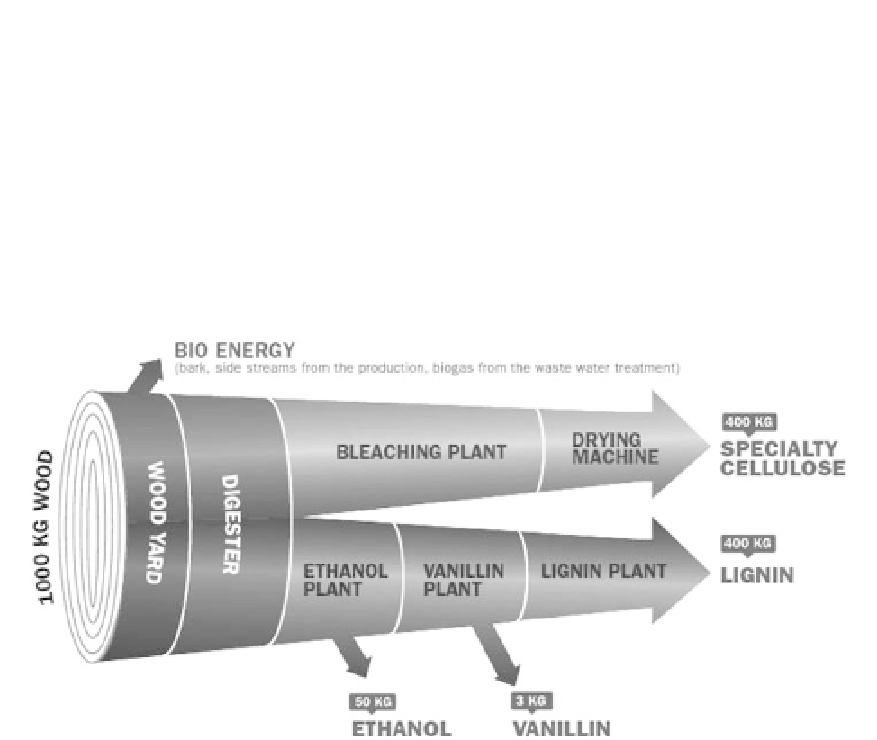Environmental Engineering Reference
In-Depth Information
Table 8.1. The 2009 world production of round wood.
Data from FAOSTAT (FAO Statistics, 2011).
Wood production
[million m
3
]
Wood fuel
1851
Sawlogs and veneer logs
782
Pulpwood, round and split
492
Other industrial roundwood
150
Figure 8.1. Schematic illustration of how wood is converted to marketable products at Borregaard.
removed lignin (sulfate lignin) has limited commercial value, and is usually incinerated in order
to recover energy and cooking chemicals. Some sulfate mills also isolate some of the extractives,
which are fractionated into fatty and resin acid constituents. In addition, turpentine (mixture of
monoterpenes) is produced.
In the less common sulfite chemical pulping process, the lignin in wood is dissolved from
the fibers using an aqueous solution of either sulfite (SO
2
3
) or bisulfite (HSO
3
) salts. The
counter ion, often referred to as the cooking base, can be either calcium (Ca
2
+
), sodium (Na
+
),
magnesium (Mg
2
+
) or ammonium (NH
4
). The sulfite process was initially developed around
the acidic calcium bisulfite process, for which neither recovery of cooking chemicals nor energy
production from lignin containing spent sulfite liquors (SSL) existed (Sixta, 2006). However, the
lignin fraction resulting from the sulfite pulping process, so-called lignosulfonate, has several
interesting properties (see section 8.2.4), making it an important raw material for a wide variety
of useful products.
Today, many different biorefinery concepts exist, the vast majority of which have the aim to
produce ethanol from biomass. Instead of listing and commenting on these current and future
projects, we have chosen to present a biorefinery concept that has been running for several decades.
This biorefinery, the Borregaard plant in Sarpsborg, Norway, is the most advanced biorefinery
operating today, and as such is a good example of a wood-based biorefinery.
The Borregaard Sarpsborg mill operates a calcium-based sulfite pulping process, in which the
high value wood components are extracted, while the less valuable components are used as fuel
(Fig. 8.1). The extraction of cellulose fiber, lignin, vanillin and ethanol is very efficient, leaving
only a small part of the wood to be converted to bio energy.



Search WWH ::

Custom Search